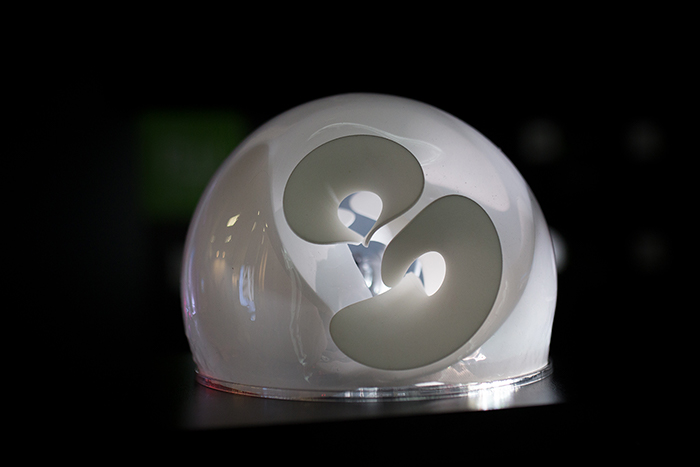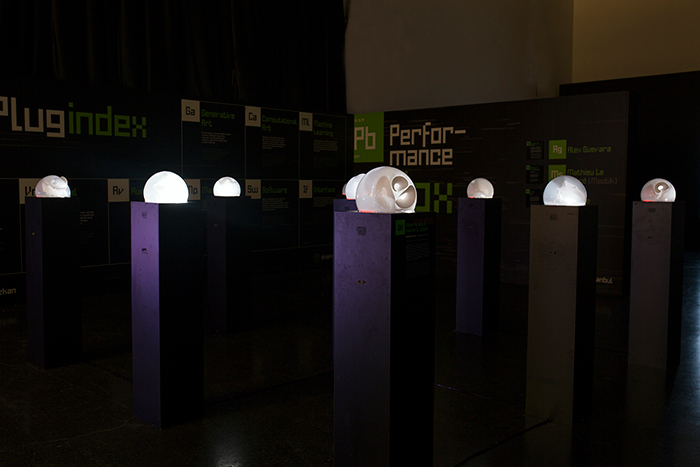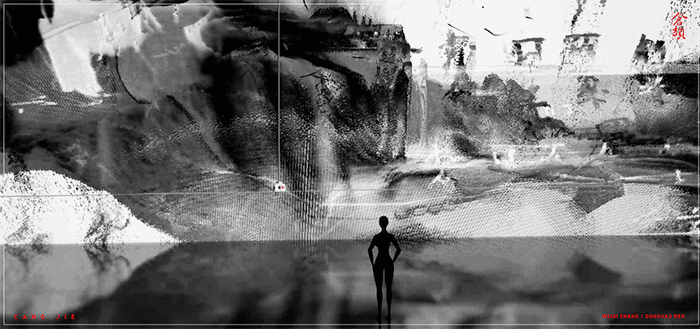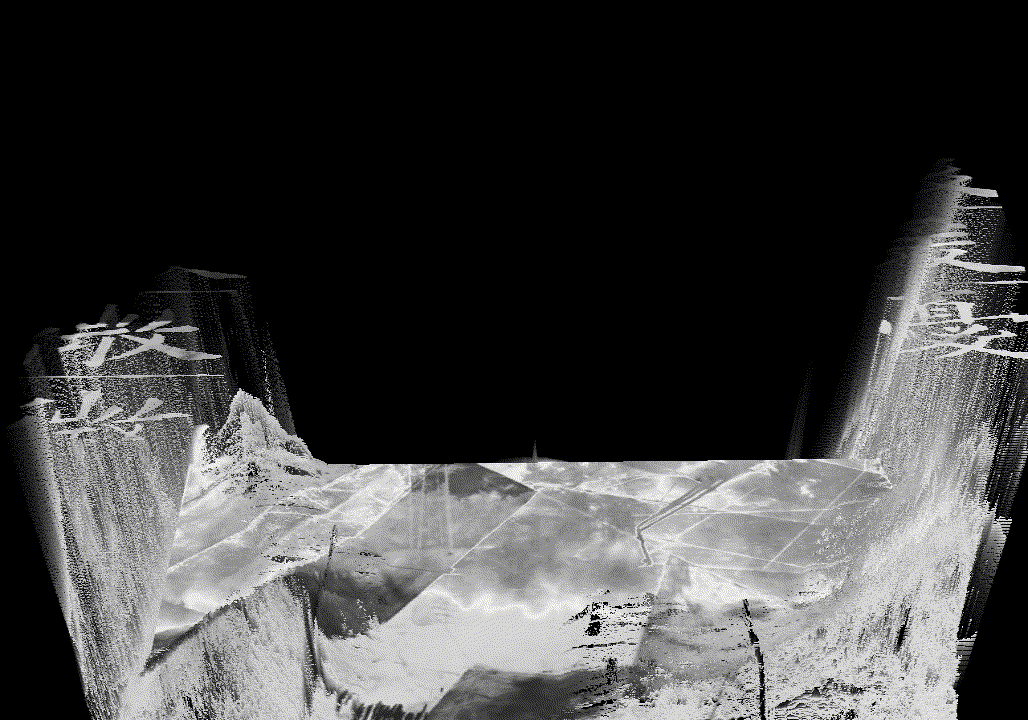

In the article, professor Legrady discusses his art, his graduate course on data visualization, artificial intelligence, big data, and the impact of the pandemic on viewing art.
www.hfa.ucsb.edu/news-entries/2020/11/15/data-in-cyberspace-george-legrady-on-remote-learning
The lab also received honorable mentions for two papers on interpersonal touch by authors Hachisu, Reardon, Shao, and Suzuki and Dinulescu, Reardon, and Topp.

The William and Meredith Saunderson Prizes for Emerging Artists consist of three awards of five thousand dollars each to support young emerging visual artists whose practice shows potential and is deemed to have the determination and talent to contribute to the legacy of art in Canada.
MYRIOI ("myriad particles") is the third immersive media work in a series of quantum media compositions under the direction of Dr. JoAnn Kuchera-Morin, the Director of the AlloSphere Research Group. It offers a shared experience that allows interaction with the world of the quantum: waveforms, light - the pure essence of form and shape. MYRIOI will share the experience of being immersed and interacting with myriads of particles that create currents becoming waveforms to understand and to experience viscerally the quantum, while sharing and interacting with the narrative. MYRIOI will also be featured in Leonardo, the leading international journal, published by the MIT Press, covering the application of contemporary science and technology to the arts.
The SIGGRAPH Conference is the world’s largest and most influential conference on the theory and practice of computer graphics and interactive techniques, inspiring progress through education, excellence, and interaction.

For more information about the AlloSphere, visit www.allosphere.ucsb.edu
"Cacophonic Choir", an Art Papers and Art Gallery selection, is an interactive sound installation aimed at bringing attention to the first-hand stories of sexual assault survivors. This is achieved through rethinking the relationship between the narrator and the listener; in this case, the survivor and the public, as well as the survivor’s own account of their experience and its public reflection and distortion. In realizing this work, we employed several digital media techniques, including machine learning, physical computing, digital audio signal processing, and digital design and fabrication.



blog.siggraph.org/2020/06/cacophonic-choir-the-sounds-of-survivor-stories.html
The award is for an upcoming publication titled "James Bay Cree Culture & Architecture", a monograph of documentary photographs created in four coastal Cree First Nation villages in sub-arctic James Bay in 1973. The publication is to consist of introductory texts, approximately 180 black and white photographs of everyday scenes in the Cree communities just prior to their legal negotiations over infrastructure autonomy and land rights in response to the construction of the James Bay Hydro-electric project on traditional hunting lands.


Photos: George Legrady. James Bay Cree, Fort George, James Bay, 1973, Quebec, Canada.
grahamfoundation.org/grantees/5959-james-bay-cree-culture-architecture.
The first project, "Volume of Voids", is inspired by the current Covid-19 pandemic, and is a set of 3D printed artifacts that explore the question "When people maintain a distance from objects and other people, what is the volume of voids between them?"

Volume of Voids, 2020
The second project, "Cangjie", is "an immersive exploration in semantic human-machine reality generated by an intelligent system in real-time through perceiving the real-world via a camera [located in the exhibition space]".

Cangjie, 2020
For more information about the IEEE VIS Arts Program 2020, visit visap.net.

Cangjie, 2020
Humans and machines are in constant conversations. Humans start the dialogue by using programming languages that will be compiled to binary digits that machines can interpret. However, Intelligent machines today are not only observers of the world, but they also make their own decisions. If A.I imitates human beings to create a symbolic system to communicate based on their own understandings of the universe and start to actively interact with us, how will this recontextualize and redefine our coexistence in this intertwined reality?
This VR project provides an immersive exploration in semantic human-machine reality generated by an intelligent system in real-time through perceiving the real-world via a camera [located in the exhibition space]. Inspired by Cangjie, an ancient Chinese legendary historian (c.2650 BCE), invented Chinese characters based on the characteristics of everything on the earth, we trained a neural network that we call Cangjie, to learn the constructions and principles of all the Chinese characters. It perceives the surroundings and transforms it into a collage of unique symbols made of Chinese strokes. The symbols produced through the lens of Cangjie, tangled with the imagery captured by the camera are visualized algorithmically as abstract pixelated semiotics, continuously evolving and compositing an ever-changing poetic virtual reality. Cangjie is not only a conceptual response to the tension and fragility in the coexistence of humans and machines but also an artistic imagination of our future language in this artificial intelligent era.
Disciplines: Biomimicry, Pneumatic Architecture, Media Arts & Technology, Human-Computer Interaction.
Conventional wearable robots designed with rigid materials, such as metal and hard plastic, are often limited by their lower flexibility, functionality, and biological compatibility. With sensory technology and novel materials, can we rethink the wearable device as a soft and organic interface? Sensing the world is connecting the body (or mechanics), the brain (or controller), and the environment. In this course, we will focus on the emerging field of soft robotics, bringing together research and applications of wearable technology. We will introduce the concept of computational morphology in soft robotics and study the design principles using 3D modeling tools. Specific topics include body architecture, pneumatic architecture, soft mechanism, smart material, biomimicry design, geometrical morphology, sensory technology, embodied intelligence, wearable computing, and human-robot interaction. We will also discuss the soft wearable applications in art, communication, fitness, entertainment, medicine, and sports, and so on. Through a series of hands-on activities, students will explore digital fabrication, soft motion mechanisms, soft actuation, and wearable sensors. By the end of the course, students will design, modeling, and build of a wearable device, and analysis the human-robot interaction.
www.summer.ucsb.edu/pre-college/summer-research-academies/sra-research-tracks
Director Dr. JoAnn Kuchera-Morin, chief designer of the three-story facility on the UC Santa Barbara campus, says the intersection of science, technology, engineering, arts, and mathematics has facilitated exciting new avenues for scientific discovery.
"But it is their strong desire to welcome research partners and collaborations of all kinds, that leads the AlloSphere to make a real difference in the local community".
Goleta’s Finest is a 70-year old tradition honoring remarkable individuals whose contributions have enhanced the Goleta community.
The 2019 award recipients will be honored with a formal celebration on Nov. 23 from 6 to 9:30 p.m. at the beautiful Ritz-Carlton Bacara.

The event is accessible to everyone with no registration required.
The live event will feature video presentations of the best papers from the conference, an awards ceremony, and previews of upcoming haptics conferences from around the world.
The event will be archived here:
www.youtube.com/channel/UC1YjMwrg8Hk6uAtyWb62yAw/videos
For more information and video presentations of all of the 77 technical papers, visit:

transmediale 2020 festival in Berlin, Germany
January 28 - March 1
Information about the "Adversarial Hacking" workshop can be found here:
kim.hfg-karlsruhe.de/adversarial-hacking-workshop
Fabian will also speak at the transmediale 2020 symposium on Neural Network Cultures on February 1st 2020 at the Volksbühne in Berlin:
2020.transmediale.de/content/exchange-5-neural-network-cultures
Fabian will also lead a workshop titled "Images as Data. Visual Culture and Machine Learning, February 10, 2020".